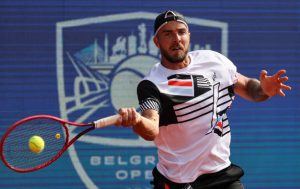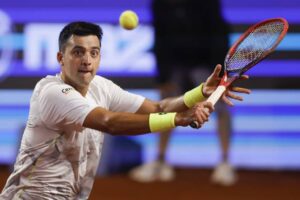Roger Federer and Rafael Nadal won the first three Slams of the year in 2007. The same is true in 2017, a decade later. Is that good for the game of tennis? Finn Ranson claims it absolutely is.
Ten years on, but it doesn’t feel like it.
2017 has seen Roger Federer win the Australian Open title, Rafael Nadal reign in Paris, and now the Swiss has taken Wimbledon, a mirror image of the 2007 Grand Slam year. For some it may feel like the game is in stagnation, the interminable success of these two players stifling media attention on the next generation. But in the modern sporting world where romanticism is sparse and short-termism rife, surely it is only good that tennis can boast these timeless, ageless legends of the game.
In the late noughties, the Nadal-Federer rivalry unequivocally produced the best tennis in the game’s rich, long history. Many great clashes have graced the hallowed turf of Centre Court, from Borg and McEnroe to Evert and Navratilova, but the 2008 Wimbledon final transcended them all for quality and sheer drama. These two greats’ resurgence has made such magical moments tantalisingly possible once more. The popular nostalgia surrounding their rivalry is demonstrated by the Australian Open final earlier this year, which saw an 80% increase in viewing figures on the previous Djokovic-Murray final for ESPN, was the most watched finals match in Australia in over a decade, and was even dubbed by Eurosport as the most watched tennis match of all time.
Part of this intrigue and the key to any great rivalry is contrast. Whilst Nadal’s roaring self-exhortations and once unsleeved biceps cast him as a figure of martial brute force, Federer’s seamless ability to glide around the ball onto his forehand and the smoothness of his service motion cast him as a twinkled-toed ballet dancer. As David Foster Wallace said in his classic New York Times essay “Roger Federer as Religious Experience”, Nadal-Federer is “the passionate machismo of southern Europe versus the intricate clinical artistry of the north. Apollo and Dionysus.” It makes for great sport; it makes for great theatre.
As much as factions of the tennis community may cry out for Zverev, Thiem, someday Kyrgios, to step into the spotlight on the Grand Slam stage, and lament the untold stories of the Tomas Berdychs and Gael Monfils of this world, it is the epic narratives of Federer and Nadal that captivate the average armchair sports fan. One day Alexander Zverev will be World #1, but he does not yet have the intangible Federer-Nadal aura, the off-court charisma and eloquence, to sustain tennis’ popularity. If it was any other pair of players, perhaps even Djokovic and Murray, we might resent their stranglehold on the game. But in their unique sportsmanship, affability and desire, Federer and Nadal are the ultimate ambassadors for tennis. In 2011, the Reputation Institute found Roger Federer to be the second most trusted, revered, and admired individual in the world behind Nelson Mandela. Both players elicit unparalleled adoration and respect.
As the eighth Grand Slam final clash between the two men, that night in Melbourne had that rare, treasured quality in sport of being steeped in history. In the increasingly cut-throat, commercially-driven world of modern sport, Federer and Nadal rediscovering their former glory after long-term injury had a wonderful sense of romance. Possibly a foreboding prophecy of life after the big four, both the French Open and Wimbledon were underwhelming tournaments for the men, full of dissatisfying upsets and new storylines that would fizzle out as quickly as they emerged. They were only redeemed by Nadal achieving “La Decima” and Federer claiming his eighth Wimbledon after a five year drought. Tennis is in a transitional period at the moment, the ATP’s so-called “NextGen” faltering and the golden generation entering their twilight years. We should savour and appreciate this rewind to 2007, because quite frankly, what would we have had to talk about?
Federer and Nadal are not only hailed by fans, they are also important to businessmen. In the London School of Marketing’s list of the world’s most marketable sportspeople, Nadal came 10th with $34.2 million sponsorship revenue and Federer topped the list ahead of LeBron James with $64.2 million. Both players have their own personal logos with Nike, the distinctive ‘RF’ and ‘raging bull’, and have a number of big bucks deals – Federer with Mercedes-Benz, Rolex and NetJets, and Nadal with Kia, Tommy Hilfiger and Telefonica. On an economic as well as a romantic level, they are hugely significant to the tennis world, ensuring that capital investment is not totally dwarfed by soccer and basketball.
Ultimately, there can be no doubt that Federer and Nadal’s enduring Grand Slam success ten years on from 2007 is good for tennis. Whenever these two men meet, it is a clash of the Titans, a clash of machismo and artistry, force and delicacy, warrior and dancer. Every time is a piece of history. For the good of the game, long may their success continue.






